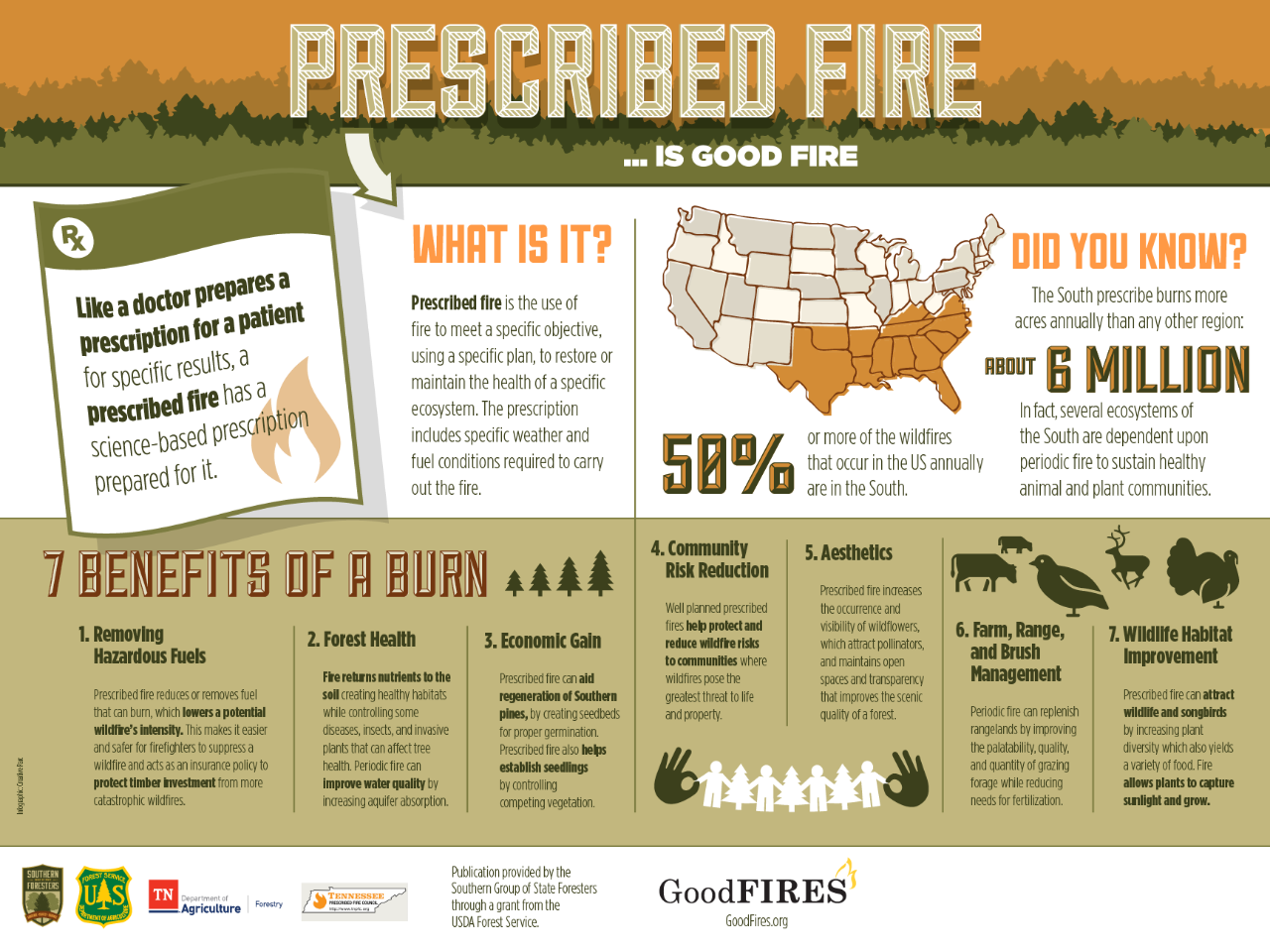
Prescribed fire is an important tool in forest health management. Prescribed fires help reduce the catastrophic damage of wildfire by safely reducing excessive brush, shrubs, and trees. They also encourage native vegetation to grow and are used to maintain the many plant and animal species whose habitats depend on periodic fire.
The Tennessee Division of Forestry supports the use of prescribed fire to meet landowner objectives and where it improves the health of the forest.
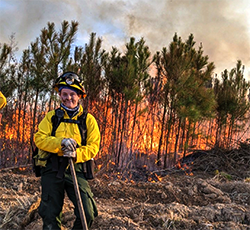
Fire has been a part of landscape of Tennessee throughout history. Pre-historic wildfires were often started by lightning and, those that did not get rained out, slowly burned reducing fuels on forest floors and across prairies keeping vegetation in balance. Native Americans and early European settlers utilized fire to maintain grasslands, keep forests open for easier travel and hunting benefits, and to remove unwanted vegetation. Many plant and animal communities are dependent on fire for sustainability.
Fire suppression has brought on unforeseen consequences to many forest areas. The removal of fire from the landscape has led to an excessive build-up of vegetation in forests and a reduction in grasslands and biodiversity in Tennessee.
Prescribed fire is the skillful and planned use of fire on a landscape under specific weather and fuel conditions to help restore health to many ecosystems. The Tennessee Division of Forestry promotes the safe use of prescribed fire on both state and private lands in Tennessee. The Division provides training and prescribed fire vendor services and planning support to landowners and partner agencies.
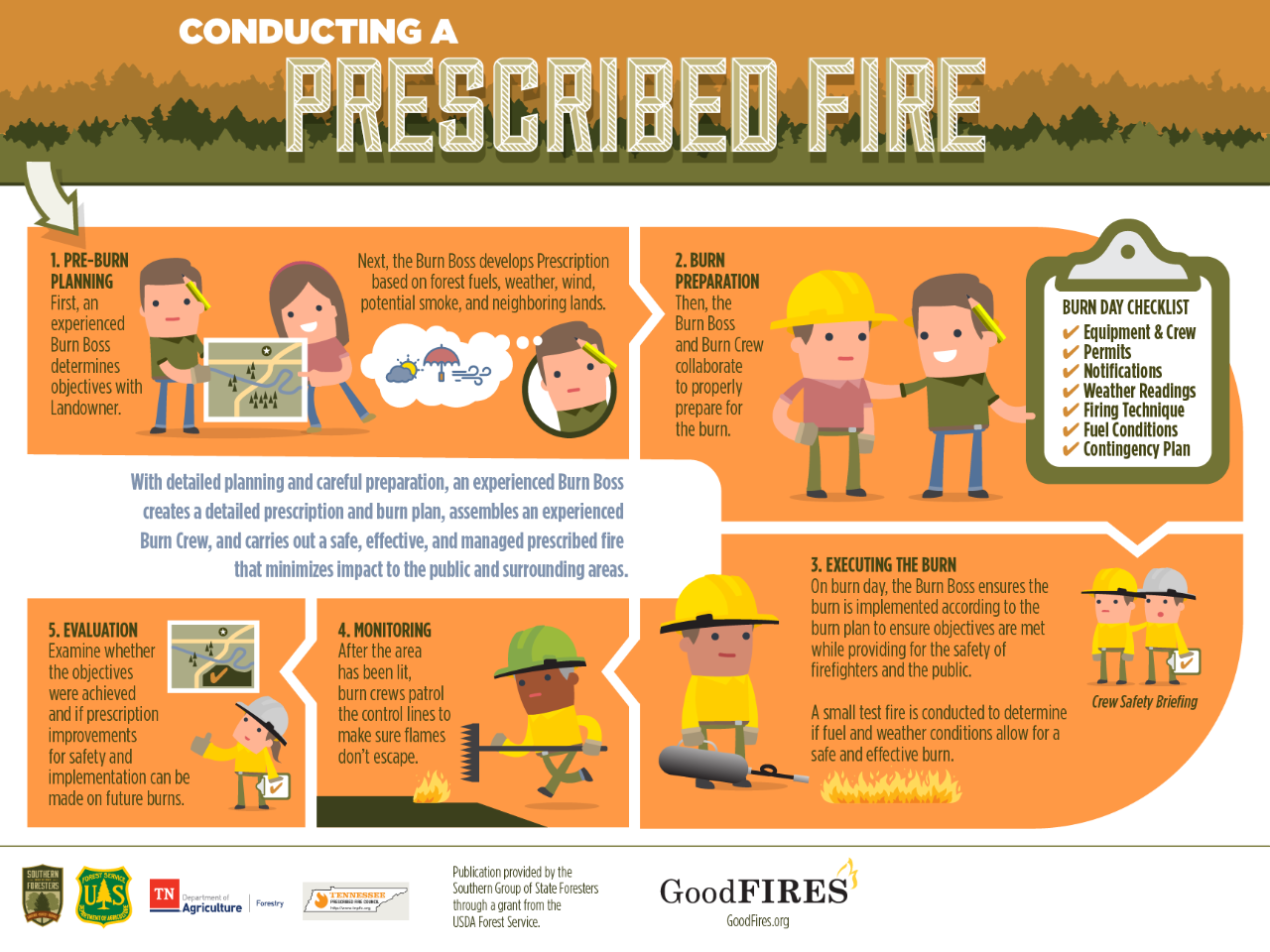
A prescription is a set of conditions that considers the safety of the public and burn team, weather, ignition patterns and techniques, and probability of meeting the burn objectives. A burn plan containing a scientific prescription for each fire is prepared in advance.
There are many techniques employed to meet the desired land management goal. Different landscapes and vegetation types require different fire intensities and ignition patterns. The technique chosen must be correlated closely with burning objectives, fuels, topography and weather factors to prevent unwanted damage to forest resources. For example, when burning in a hardwood forest a low intensity fire is desired. By contrast, when burning slash or invasive species, a higher intensity fire would be utilized to ensure higher consumption of targeted fuels.
The Fire Effects Information System provides specific information of fire effects on plants and animals which can assist with developing a prescription for fire use.
Burn technique factors to consider in order to achieve your plans’ objectives:
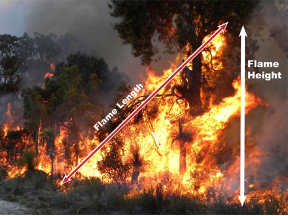
Flame length is the distance measured from the average flame tip to the middle of the flaming zone.
Fire Intensity is the heat release of the fire. Flame length correlates to fireline intensity
(Fireline Intensity measured in kilowatts/meter or BTU per foot per second)
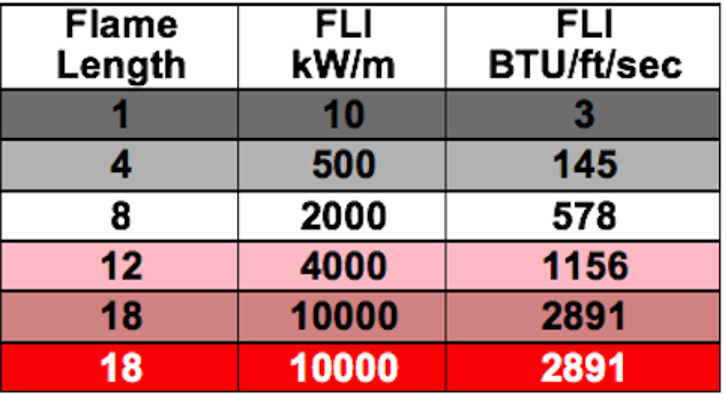
Residence time is the time fuels will burn in a given area.
- Head Fire - high intensity, heat is higher off the ground, and burns for a short duration
- Backing Fire - low intensity, heat is lower to the ground, and burns for long duration
Rate of Spread is the speed at which a fire spreads.
Rate of spread (ROS) is measured from any point on the fire perimeter in a direction perpendicular to the perimeter. ROS can vary due to changing conditions, and is taken as an average. The fastest ROS is at the head; backing is much less; and flanking is intermediate. All can change quickly with a shift in WIND.
Residence time and rate of spread can be manipulated by the type of fire based on wind direction, slope, and other factors influencing the path of the fire.
Sides of a fire
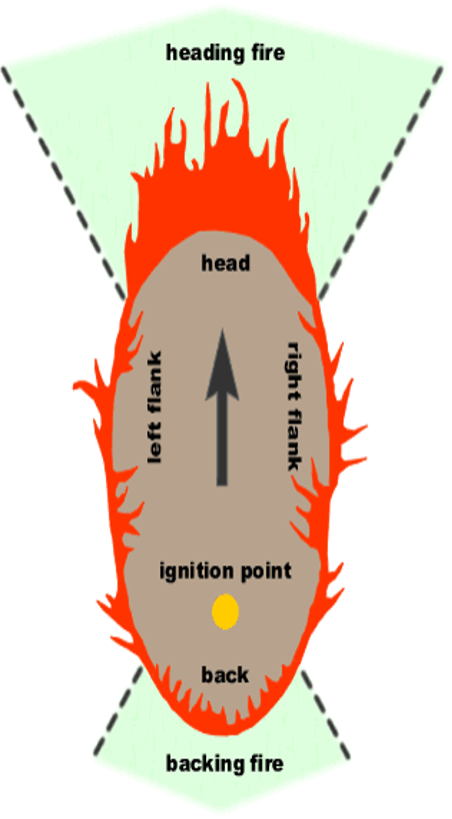
The burn plan describes burn objectives, fuels to burn, size /location, the precise environmental conditions required for the site (weather, fuel conditions, smoke dispersal) and conditions under which it may be suppressed.
The following template is an example of the accepted burn plan utilized by the TDF.
Weather is an important environmental factor to consider when planning and executing an prescribed burn. Weather greatly influences how fire behaves and can lead to the success or failure of a burn project. Weather is so important to the success of a burn that a three day weather forecast and on-site weather observations are required.
Factors to consider are:
- Temperature
- Relative humidity
- Wind Speed and direction
- Mixing Height
- Transport wind speed
- Dispersion Index
The National Weather Service can provide a general area fire weather forecast which will provide all of the required weather information. A specific spot weather forecast can be requested from the weather service. A spot weather forecast is a site specific weather forecast.
Onsite weather observations can be made with hand held weather monitors such as a Kestrel which is an automated device, or a manual belt weather kit.
